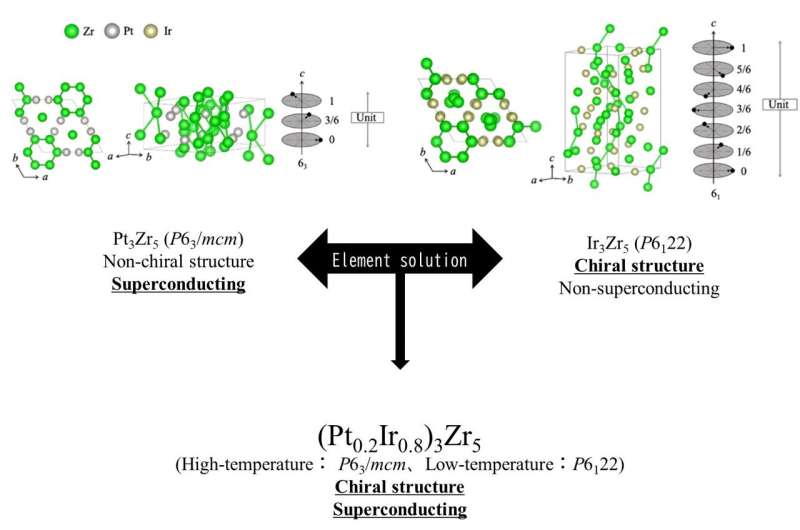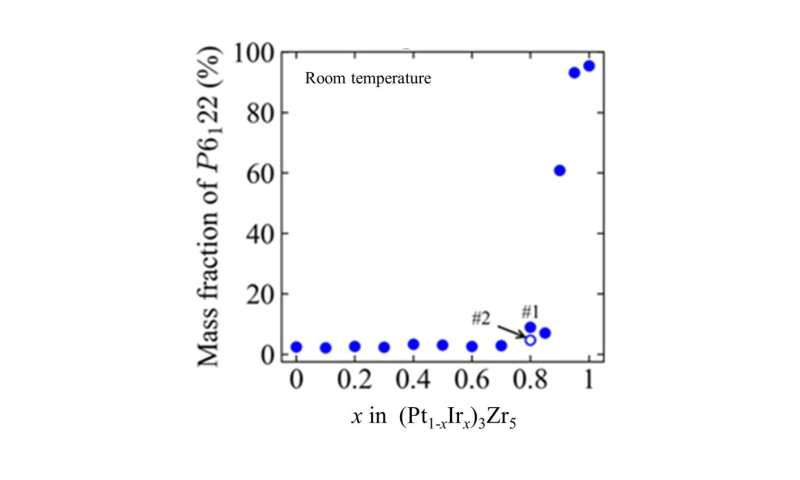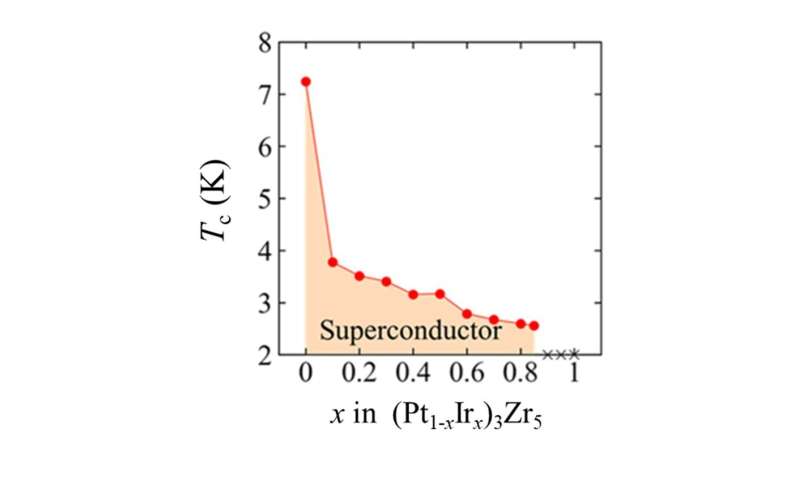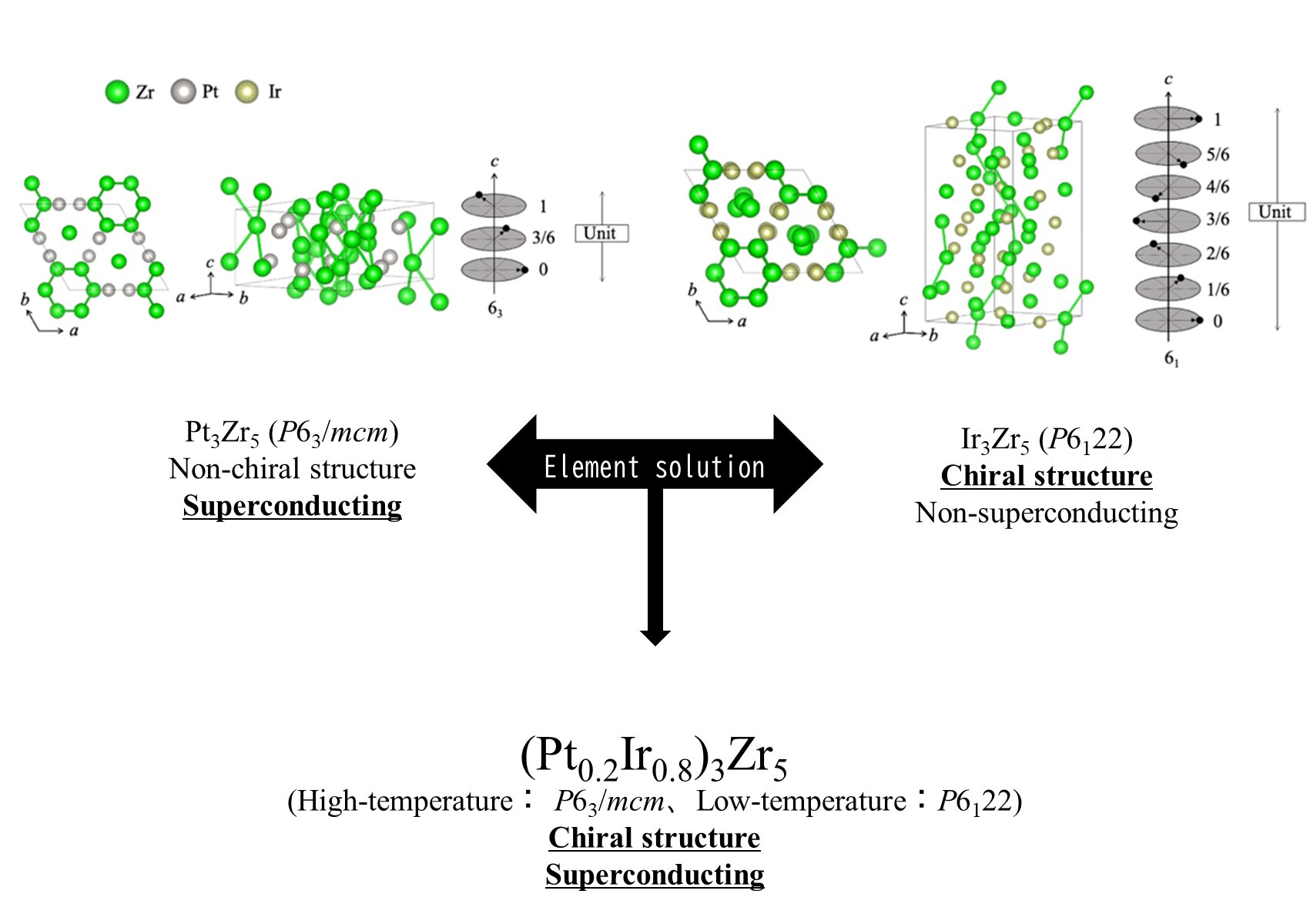by Tokyo Metropolitan University

Researchers from Tokyo Metropolitan University have created a new superconductor with a chiral crystalline structure by mixing two materials, one with superconductivity but no chirality, another with chirality but no superconductivity.
The new platinum-iridium-zirconium compound transitions to a bulk superconductor below 2.2 K and was observed to have chiral crystalline structure using X-ray diffraction. Their new solid solution approach promises to accelerate the discovery and understanding of new exotic superconducting materials.
Scientists studying superconductivity are on a mission to understand how the exotic nature of superconducting materials arises from their structure, and how we might control the structure to get desirable properties.
Of the many aspects of structure, an interesting recent development is the issue of chirality. Many structures have a “handedness,” that is, they do not look the same in a mirror. An effect of chirality in superconductors is to trigger something called asymmetric spin-orbit coupling (ASOC), an effect that can make superconductors more robust to high magnetic field exposure.
To understand chirality in more depth, however, scientists need more superconductors with a chiral structure to study. The usual route is to search out chiral compounds, check if they are superconducting or not, rinse and repeat: this is very inefficient.
That is why a team from Tokyo Metropolitan University led by Associate Professor Yoshikazu Mizuguchi has introduced an entirely new approach. Instead of combing through lists of compounds, they mixed two compounds with known physical properties, a platinum-zirconium compound with superconductivity but no chirality, and an iridium-zirconium compound with a chiral structure, but no reports of superconductivity. The work is published in the Journal of the American Chemical Society.
By combining elements in a ratio that matches a certain proportion of each compound, they were able to effectively “mix and match” physical properties, coming up with a new material that had both a chiral crystal structure and superconductivity.
 X-ray diffraction patterns at different temperatures (top), and the extracted fraction of chiral compound (bottom) show that the proportion of chiral compound increases at lower temperature. Credit: Tokyo Metropolitan University
X-ray diffraction patterns at different temperatures (top), and the extracted fraction of chiral compound (bottom) show that the proportion of chiral compound increases at lower temperature. Credit: Tokyo Metropolitan University As the proportion of iridium is increased, the proportion of P6122, the chiral component, increases. Credit: Tokyo Metropolitan University
As the proportion of iridium is increased, the proportion of P6122, the chiral component, increases. Credit: Tokyo Metropolitan University Superconductivity can be confirmed below an iridium proportion of around x = 0.85 in (Pt1-xIrx)3Zr5. Credit: Tokyo Metropolitan University
Superconductivity can be confirmed below an iridium proportion of around x = 0.85 in (Pt1-xIrx)3Zr5. Credit: Tokyo Metropolitan University X-ray diffraction patterns at different temperatures (top), and the extracted fraction of chiral compound (bottom) show that the proportion of chiral compound increases at lower temperature. Credit: Tokyo Metropolitan University
X-ray diffraction patterns at different temperatures (top), and the extracted fraction of chiral compound (bottom) show that the proportion of chiral compound increases at lower temperature. Credit: Tokyo Metropolitan University As the proportion of iridium is increased, the proportion of P6122, the chiral component, increases. Credit: Tokyo Metropolitan University
As the proportion of iridium is increased, the proportion of P6122, the chiral component, increases. Credit: Tokyo Metropolitan University

